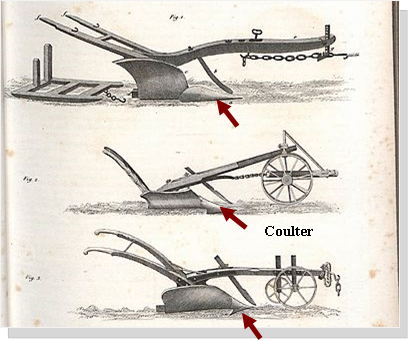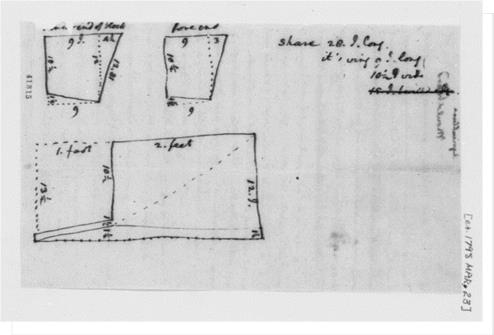
UnCovered
Jefferson Era Coulter Found in Fairfax Park
Fairfax County Park Authority
 Thomas Jefferson loved inventions, and Fairfax County Park Authority archaeologists recently discovered a Jeffersonian-era artifact that illustrates some of the inventive work that was going on in farming in the late 1700s.
Thomas Jefferson loved inventions, and Fairfax County Park Authority archaeologists recently discovered a Jeffersonian-era artifact that illustrates some of the inventive work that was going on in farming in the late 1700s.
When archaeologists work at historic sites occupied after the arrival of Europeans in the Americas, it is not uncommon for them to come across large pieces of metal. When one of these pieces cannot be immediately identified, the default ID is usually “plow part.” Sometimes, it actually is a plow part.
During recent excavations of a circa 1760 to 1820 slave quarters site on Patriot Park North, Fairfax County Park Authority (FCPA) archaeologists recovered this bar-like, cast metal artifact with holes that appeared to allow for some kind of adjustments. One of the agency’s amazing volunteers researched the object and discovered it was called a “coulter.” The coulter would have been vertically mounted to cut into the ground before a plow separated the dirt, creating a deeper cut with less effort than other designs.
The late 1700s and early 1800s witnessed an explosion in agricultural experimentation and innovation. Regional farmers sought to maximize yields through practices like crop rotation and used improved implements to better work the local, piedmont clay soils. In 1794, Thomas Jefferson received the patent for the moldboard plow.
This design utilized a coulter similar to the one found during the FCPA excavations. Inventions such as these were especially welcome in the Virginia piedmont where attempts at tobacco cultivation had depleted soils and farmers looked for other crops to remain economically viable. Artifacts such as the coulter reflect this broad change and speak to the daily labors of enslaved persons in Fairfax County.
President Thomas Jefferson (1743-1826), one of Virginia's largest planters, considered agriculture to be "a science of the very first order," and he studied it with great zeal and commitment. Jefferson introduced numerous plants to the United States, and he frequently exchanged farming advice and seeds with like-minded correspondents.
 Of particular interest to the innovative Jefferson was farm machinery, especially the development of a plow which would delve deeper than the two to three inches achieved by a standard wooden plow. Jefferson needed a plow and method of cultivation that would help prevent the soil erosion that plagued Virginia's Piedmont farms. To this end, he and his son-in-law, Thomas Mann Randolph (1768-1828), who managed much of Jefferson's land, worked together to develop iron and mouldboard plows, like the one shown here, that were specifically designed for hillside plowing, in that they turned the furrow to the downhill side. Jefferson's plows were often based on mathematical formulas, which helped facilitate their duplication and improvement.
Of particular interest to the innovative Jefferson was farm machinery, especially the development of a plow which would delve deeper than the two to three inches achieved by a standard wooden plow. Jefferson needed a plow and method of cultivation that would help prevent the soil erosion that plagued Virginia's Piedmont farms. To this end, he and his son-in-law, Thomas Mann Randolph (1768-1828), who managed much of Jefferson's land, worked together to develop iron and mouldboard plows, like the one shown here, that were specifically designed for hillside plowing, in that they turned the furrow to the downhill side. Jefferson's plows were often based on mathematical formulas, which helped facilitate their duplication and improvement.
(Copyright © 2012 Annandale Chamber of Commerce. All rights reserved. (Photographs & images, on this page, and on this website, are not available for use by other publications, blogs, individuals, websites, or social media sites.)
Copyright 2012 Annandale Chamber of Commerce. All rights reserved. Privacy Policy

